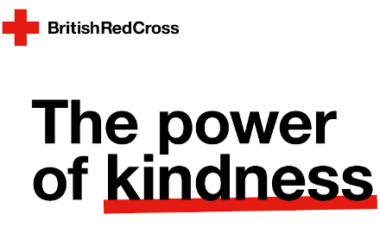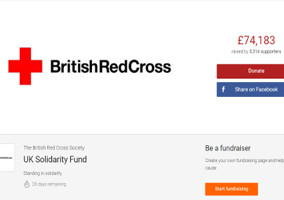The British Red Cross has reported a £32.8m increase in its income over the last financial year, due in part to the public’s response to the terrorist attacks in London and Manchester, as well as the Grenfell Tower disaster.
The charity's latest set of accounts for the year ending 31 December 2017, seen by Civil Society News and published today, show a 13 per cent increase in its annual income to £284.5m.
In that time, the British Red Cross saw an 18 per cent increase in voluntary donations as well as legacies, which accounted together for 45 per cent, or £159.7m of the charity’s total income.
“Income from our supporters remains our biggest source of income, and the overall fundraising performance continued to reflect an enormous level of effort from our many supporters, volunteers and corporate partners,” said the accounts.
“Domestically, the tragic events that occurred in Manchester and at Grenfell saw the country unite as the British public donated a staggering amount to the British Red Cross in our efforts to aid those affected by these crises.”
Increase in domestic crisis response spending
The British Red Cross spent £276.1m last year, an overall increase of 17 per cent on the previous financial year.
Of this whole, the British Red Cross spent £220.9m on charitable activities - £140.1m in the United Kingdom and £80.8m spent internationally.
In response to the aforementioned domestic emergencies faced by the UK in 2017, total expenditure on crisis response domestically rose by 82 per cent last year to £46.5m.
In a year which saw the British Red Cross’s income from donations and legacies increase by nearly 20 per cent, its fundraising spend actually fell marginally. The charity spent £29.2m on fundraising in 2017, £200,000 less than it spent on fundraising the previous years.
The accounts said the reason for this was “the ongoing rollout of changes to fundraising regulation and activities in the sector, which continue to impact on our fundraising investment”.
In the 2017 financial year, the charity employed 3,349 full-time equivalent staff members, down from over 3,500 in 2016. The charity paid out a total of over £600,000 in redundancies last year.
In terms of staff costs, the charity spent £94.4m in salaries, pensions and national insurance, in the financial year ending 31 December 2017. This was down from £95.9m the previous year.
There were 52 staff members paid £60,000 a year or more by the charity in 2017. The highest paid employee at the charity in 2017 was Mike Adamson, its chief executive, who was paid £173,000.
Fundraising complaints and gender pay gap
As part of new reporting requirements bought in by both the Charities Act 2018 and the updated Equality Act 2010, the Red Cross has also published data around its gender pay gap and total number of fundraising complaints.
As of 5 April 2017, the British Red Cross reported a mean gender pay gap of 11.8 per cent and a median pay gap of 8.9 per cent. This was despite that fact that, in terms of gender distribution throughout its workforce, the organisation is nearly two-thirds female.
The charity also reported a 42.4 per cent mean gender bonus gap and a 64.3 per cent median gender bonus gap – although the organisation blamed these discrepancies on its “no discontinued retail incentive scheme”.
In terms of total fundraising complaints, the British Red Cross reported that it received a total of 256 complaints from members of the public.
It also said it had “nothing to report in respect of failures and/or breaches” to either the Information Commissioner’s Office or the Fundraising Regulator.
To coincide with the charity's accounts being published today, Mike Adamson has written a blog discussing the year that was for the British Red Cross, and outlining his plans for the future.
|
Related Articles












